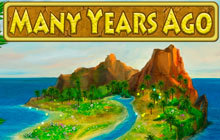Many Years Ago When I Was Younger
What is Lost when a Parent Dies. As we try to understand how children react to the death of a parent we need to look at several factors. The most common aspect of their grief, that is usually.
Microsoft ODBC Driver 13 for SQL Server should be used to create new applications or enhance existing applications that need to take advantage of new SQL Server 2016 features. .Microsoft ODBC Driver 13.1 for SQL Server is a single dynamic-link library (DLL) containing run-time support for applications using native-code APIs to connect to Microsoft SQL Server 2008, SQL Server 2008 R2, SQL Server 2012, SQL Server 2014, SQL Server 2016, Analytics Platform System, Azure SQL Database and Azure SQL Data Warehouse.  This redistributable installer for Microsoft ODBC Driver 13 for SQL Server installs the client components needed during run time to take advantage of new SQL Server 2016 feautres, and optionally installs the header files needed to develop an application that uses the ODBC API.
This redistributable installer for Microsoft ODBC Driver 13 for SQL Server installs the client components needed during run time to take advantage of new SQL Server 2016 feautres, and optionally installs the header files needed to develop an application that uses the ODBC API.
While reading Swan's Practical English Usage, I came across this sentenceI don't do much sport now, but I did play football when I was younger.Why comparative younger? Simply young could have worked there, couldn't it? Or, does it mean that 'younger' means the speaker just left playing sport last year?

As it reflects younger as the phase of life earlier than the present year (of his age).For instance, if the speaker is 45.I don't do much sport now, but I did play football when I was younger (than this age) - Up till 44 he played OVER I don't do much sport now, but I did play football when I was young - When he was young, say in 20s-30s or whatever. Young is the time of life before adulthood, synonymous with youth.When I was young. = When I was a youth. Before my adulthood. This wouldn't make much sense for a 10 year old to say, but they may. Also, someone that is 100 may use young to refer to their twenties, even though that is adulthood.Younger is comparative with the current age.When I was younger.
= Ages prior to my current age. This obviously depends on context. If you are 100 then younger could be 90, however in the context of playing football that is not as likely. In this sort of discourse, both young and younger refer to “life stages” rather than mathematical measurements. So younger would not mean “at all earlier ages” but “in an earlier stage of life”.
As others have indicated, the use of 'when I was young' often indicates a much older person than the more subjective 'when I was younger'. Without knowing, most native speakers would assume from 'when I was young' that you are elderly (60 & up) - someone generally thought to be now physically incapable of the activity being discussed.Also, on a different note, the phrase 'I don't do much sport now' may be in Swan's book, but it makes very little sense to native American English speakers.As a man from Texas in his 40's, I would say 'I don't play sports now, but I did when I was younger.' Hope that helps.
Grains of pollen from various plants can also tell us about this cooler period, which people who study climate prehistory call and which interrupted a warming trend after the last Ice Age. The term gets its name from a wildflower, Dryas octopetala.It can tolerate cold conditions and was common in parts of Europe 12,800 years ago. At about this time a number of animals became extinct.
These included mammoths in Europe, large bison in North America, and giant sloths in South America.The cause of this cooling event has been debated a great deal. One possibility, for instance, is that it relates to changes in oceanic circulation systems. In 2007 Richard Firestone and other American scientists presented a: that the cause was a cosmic impact like an asteroid or comet.The impact could have injected a lot of dust into the air, which might have reduced the amount of sunlight getting through the earth's atmosphere. This might have affected plant growth and animals in the food chain.Research we have just had published on this Younger Dryas Impact Hypothesis. We focus on what platinum can tell us about it. How platinum fits into the picturePlatinum is known to be concentrated in meteorites, so when a lot of it is found in one place at one time, it could be a sign of a cosmic impact.
Platinum spikes have been discovered in an as well as as far apart as Europe, Western Asia, North America and even Patagonia in South America. These spikes all date to.Until now, there has been no such evidence from Africa. But working with two colleagues, Professor Louis Scott (University of the Free State) and Philip Pieterse (University of Johannesburg), I believe from South Africa's Limpopo province that partly supports the controversial Younger Dryas Impact Hypothesis.The new information has been obtained from, an archaeological site with peat deposits at a spring situated outside a small town to the north of Pretoria. In a sample of peat we have identified a platinum spike that could at least potentially be related to dust associated with a meteorite impact somewhere on earth 12,800 years ago.
The platinum spike at Wonderkrater is in marked contrast to almost constantly low (near-zero) concentrations of this element in adjacent levels. Subsequent to that platinum spike, pollen grains indicate a drop in temperature. These discoveries are entirely consistent with the Younger Dryas Impact Hypothesis.Wonderkrater is the first site in Africa where a Younger Dryas platinum spike has been detected, supplementing evidence from southern Chile, in addition to platinum spikes at 28 sites in the northern hemisphere.We are now asking a question which needs to be taken seriously: surely platinum-rich dust associated with the impact of a very large meteorite may have contributed to some extent to major climatic change and extinctions?
A meteorite crater in GreenlandVery recently a large meteorite crater with a diameter of 31km in northern Greenland, beneath the ice of the Hiawatha glacier. It is not certain that it dates to the time of the Younger Dryas, but the crater rim is fresh, and ice older than 12,800 years is missing.It seems possible (but is not yet certain) that this particular crater relates to the hypothesised meteorite that struck the earth at the time of the Younger Dryas, with global consequences.The effects of a meteorite impact may potentially have contributed to extinctions in many regions of the world. There is no doubt that platinum spikes in North America coincide closely with the extinction of animals on a big scale about 12,800 years ago. Extinctions in AfricaIn a South African context, my team is suggesting that platinum-rich cosmic dust and its associated environmental effects may have contributed to the extinction of large animals that ate grass. These have been at places such as Boomplaas near the Cango Caves in South Africa's southern Cape, where important excavations have been undertaken.At least three species went extinct in the African subcontinent. These included a giant buffalo ( Syncerus antiquus), a large zebra ( Equus capensis) and a large wildebeest ( Megalotragus priscus).
Each weighed about 500kg more than its modern counterpart.There may have been more than one cause of these extinctions. Hunting by humans could have been a factor. And the large buffalo, zebra and wildebeest had already been affected by habitat changes at the end of the last Ice Age, which was at its coldest about 18,000 years ago.What about human populations? A cosmic impact could have indirectly affected people as a result of local changes in environment and the availability of food resources, associated with sudden climate change. Stone tools relate to the cultural identity of people who lived in the past. Around 12,800 years ago in at least some parts of South Africa there of an apparently abrupt termination of the 'Robberg' technology represented by stone tools found for example at Boomplaas Cave.Coincidentally, North American archaeological sites indicate the sudden end of a stone tool technology called Clovis.But it is too early to say whether these cultural changes relate to a common causal factor.
Reality checkThe Younger Dryas Impact Hypothesis, and the evidence to support it, is a reminder of how much can change when a rocky object hits the earth. Many asteroids are situated between Mars and Jupiter, and on occasion some come very close to.The probability of a large one striking earth may seem to be low. But it's not impossible.Take Apophis 99942. It is classified as a. It is 340 metres wide and will come exceptionally close to the earth (in relation to an Astronomical Unit, the distance between us and the sun) on Friday April 13 2029.The probability of its hitting us in ten years' time is only one in 100,000. But the probability of an impact may be even higher at some time in the remote future.What's more, comets associated with the Taurid Complex approach the earth relatively closely at intervals of centuries. So a large asteroid or comet could fall to earth in the foreseeable future.The Younger Dryas Impact Hypothesis is highly controversial.
But the evidence suggests it is not improbable that a large meteorite struck the earth as recently as 12,800 years ago, with widespread consequences., Honorary Research Associate, Evolutionary Studies Institute,This article is republished from under a Creative Commons license.
Jelly jump by fun games for free free download - Jump Jump Jelly Reactor, Jelly Jam - Jumping fun of jelly, Jelly Jump, and many more programs. Multiplication games - Jelly Jump! - math games Fun4theBrain. Multiplication Game Use your mad math skills to leap your way to fun with Jelly Jump! Jelly jump by fun games for free computer.